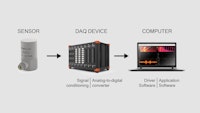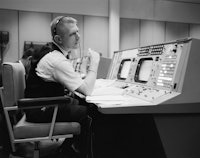Table of contents
Browse categories
Browse authors
 AB
ABAlberto Boffi
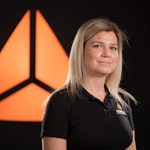 AL
ALAlessia Longo
 AH
AHAl Hoge
 AB
ABAljaž Blažun
 BJ
BJBernard Jerman
 BČ
BČBojan Čontala
 CF
CFCarsten Frederiksen
 CS
CSCarsten Stjernfelt
 DC
DCDaniel Colmenares
 DF
DFDino Florjančič
 EB
EBEmanuele Burgognoni
 EK
EKEva Kalšek
 FB
FBFranck Beranger
 GR
GRGabriele Ribichini
Glacier Chen
 GS
GSGrant Maloy Smith
 HB
HBHelmut Behmüller
 IB
IBIza Burnik
 JO
JOJaka Ogorevc
 JR
JRJake Rosenthal
 JS
JSJernej Sirk
 JM
JMJohn Miller
 KM
KMKarla Yera Morales
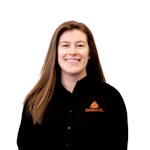 KD
KDKayla Day
 KS
KSKonrad Schweiger
Leslie Wang
 LS
LSLoïc Siret
 LJ
LJLuka Jerman
 MB
MBMarco Behmer
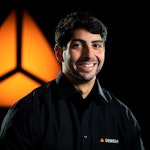 MR
MRMarco Ribichini
 ML
MLMatic Lebar
 MS
MSMatjaž Strniša
 ME
MEMatthew Engquist
 ME
MEMichael Elmerick
 NP
NPNicolas Phan
 OM
OMOwen Maginity
 PF
PFPatrick Fu
 PR
PRPrimož Rome
 RM
RMRok Mesar
 RS
RSRupert Schwarz
 SA
SASamuele Ardizio
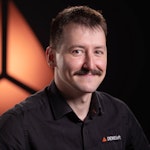 SK
SKSimon Kodrič
 SG
SGSøren Linnet Gjelstrup
 TH
THThorsten Hartleb
 TV
TVTirin Varghese
 UK
UKUrban Kuhar
Valentino Pagliara
 VS
VSVid Selič
 WK
WKWill Kooiker
How Aerospace Telemetry Works and Why It’s Crucial for Space Missions

February 4, 2025
Aerospace telemetry systems measure and collect data from sensors and instruments on aircraft and spacecraft and transmit them to be processed, reviewed, and stored elsewhere. Just as the words “television” and “telephone” refer to sending images and sound across distances, "telemetry" refers to transmitting data across distances. Essential parameters like temperature, pressure, speed, and other data are sent to a remote location for monitoring and analysis.
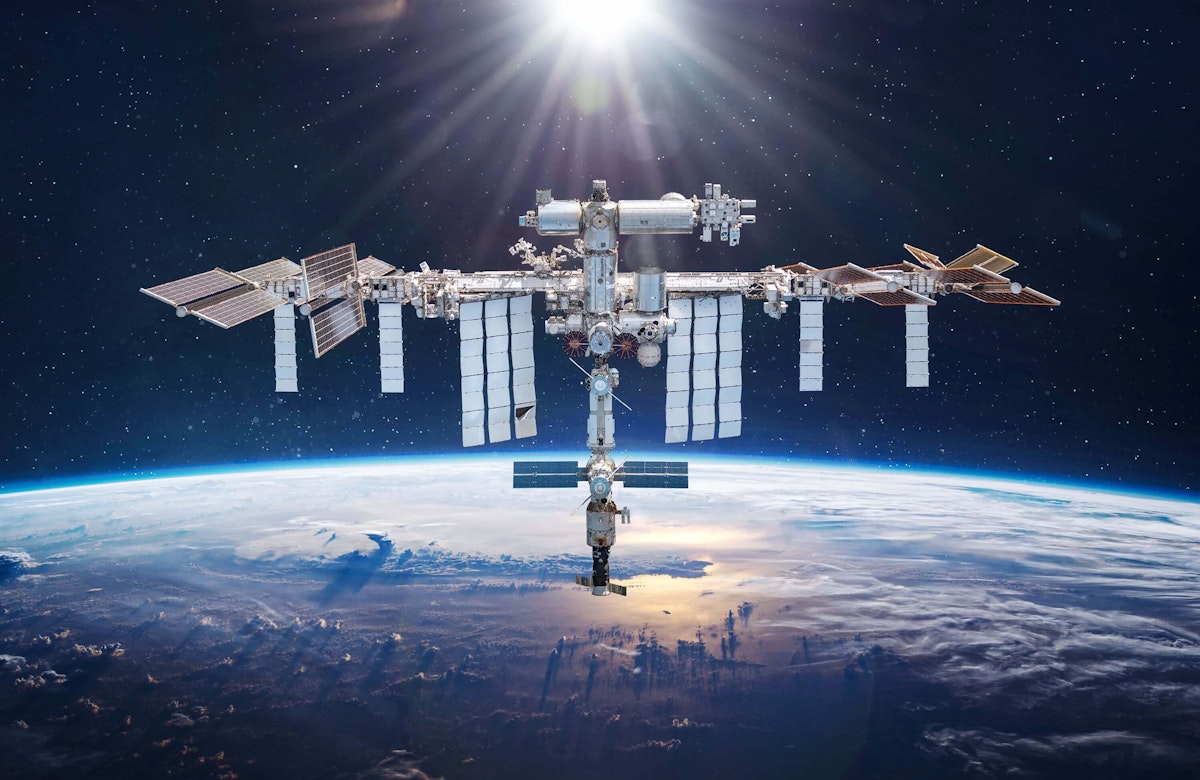
Airborne telemetry devices
Sensors and transducers are the tip of the spear of any physical measurement testing application. These essential devices convert physical properties like vibration, temperature, RPM, stress, strain, voltage, and current to a format that can be digitized and thus measured and analyzed.
Sensors and transducers
Sensors and transducers measure physical things like temperature, pressure, acceleration, and vibration. They change these measurements into a digital transmission, analysis, and storage format. In aerospace, sensors are often placed in critical areas like engines and control surfaces. The environments are harsh, with extreme temperatures, shock, and vibration.
The outputs from these sensors go into onboard systems for local control. Some outputs are sent via telemetry to Earth or other spacecraft for monitoring, recording, and analysis. The most common sensors used in telemetry applications include:
RF, telemetry, & inertial sensors
Gyroscopes detect orientation and angular velocity changes.
Inertial Measurement Units (IMUs) combine accelerometers with gyroscopes for navigation and control.
Antenna Sensors track the signal strength and alignment of communication antennas.
Radio Altimeters measure the altitude of an aircraft above the surface, which is critical during descent and landing.
Position & navigation sensors
GPS/GNSS Receivers provide position, altitude, and speed data.
Magnetometers measure a planet’s magnetic field to assist in orientation and heading determination.
Star Trackers recognize star patterns to assist with celestial navigation.
Pressure & strain sensors
Barometric Pressure Sensors measure altitude based on atmospheric pressure changes.
Differential Pressure Sensors measure airspeed by measuring the difference between static and dynamic pressures.
Cabin Pressure Sensors monitor and control pressure within the cabins of crewed spacecraft.
Strain Gauges measure deformations in structural components to assess stress and detect potential failure points.
Temperature sensors
Thermocouples, thermistors, and RTDs measure the temperatures of engine components, structural elements, and external surfaces. Temperature sensors are made for surface measurements on solar panels, engine components, antennas, coolers, black-body calibrators, and more. They are also made for immersion in liquid and gas, including exhaust ports, fuel tanks, valves, and more.
Infrared sensors measure surface temperatures without physical contact.
Vibration sensors
Accelerometers measure acceleration to determine changes in velocity and help track position. Piezoelectric charge or IEPE types are used for dynamic measurements, while MEMS-based capacitive types are used for static (DC) and quasi-static applications.
Strain Gauges can also measure vibration up to their maximum bandwidth.
Optical & imaging sensors
Cameras and LIDAR sensors capture visual data for imaging and mapping applications, including terrain and obstacle detection.
Photodetectors measure light intensity. They augment spacecraft orientation relative to visible stars.
Earth sensors and sun sensors are used for satellite positioning.
Environmental & flow sensors
Gas Sensors ensure safety by detecting hazardous gases or oxygen levels in crewed spacecraft.
Humidity Sensors monitor moisture levels within crew cabins and other sensitive areas to assist environmental control systems.
Temperature Sensors measure ambient temperatures within crewed spaces to assist environmental control systems.
Radiation Sensors measure radiation levels in space, which can be life-threatening outside Earth’s protective atmosphere.
Flow Meters track fuel and coolant flow rates.
Level Sensors monitor levels in fuel tanks.
The telemetry commutator
A telemetry commutator is an electronic device used in aerospace and other fields. It combines multiple sensor signals into one efficient data stream. Sensors often work at different speeds or send data in different formats.
Some data points, called “measurands,” are more important than others. These important points should be sent more often. Less important data can be sent less frequently. For example, temperature readings don’t need updates every second. However, more dynamic measurements should be updated many times each second.
How does a commutator work?
The commutator takes measurements from multiple sensors or data sources and organizes them in a specific sequence. Each sensor's data is allocated a time slot within a repeating cycle or frame in a Time-Division Multiplexing process (TDM). In this process, data from every sensor is sampled in a fixed order within each cycle, repeated frame by frame. Early commutator designs used rotating mechanical contacts to cycle through a series of contacts or data points, but modern digital systems have replaced them for speed, scalability, and reliability.
The commutator divides the data stream into frames, each containing a complete data set from all designated sensors or channels. Each sensor’s data is allocated a specific position within each frame that the decommutator on the receiving end will recognize. The frame structure is often accompanied by markers (frame sync words or patterns) that indicate the start and end of each frame, aiding the decommutator to align the data.
Synchronization markers and headers
Each frame typically starts with a unique synchronization marker or header, a predefined bit pattern that helps the frame synchronizer on the receiving end identify the beginning of each new frame. These markers are essential for maintaining accurate data alignment and ensuring the telemetry stream remains synchronized despite potential transmission disruptions or noise.
Commutation modes
The commutator samples data from each sensor at a rate suitable for each sensor’s characteristics. High-priority or high-rate sensors may be sampled more frequently, while slower-rate data sources might only be included every few frames. These are called:
Supercommutation refers to sampling data more frequently than the primary data stream.
Subcommutation refers to sampling data less frequently than the primary data stream.
There are other commutation modes, such as random commutation, where the signal is sampled randomly throughout the major frame (not on an even interval in a minor frame or subframes). Another mode is random normal commutation, where the signal is sampled randomly in a minor frame (not on an even interval) but sampled at the same word location for every minor frame in the major frame. Some commutators also handle basic data scaling or compression to optimize the data, making the most efficient use of the available bandwidth.
The graphics below show the three basic types of commutation: normal, supercommutation, and subcommutation. FS refers to the frame sync, while SFID refers to the subframe identifier.
Error-detection codes
The commutator may add error-detection codes to the stream, such as cyclic redundancy checks (CRCs) or parity bits, to ensure data integrity within each frame. Error detection codes allow the decommutator that receives the data to detect and correct errors that may have occurred during data transmission.
Outputting a continuous data stream
After sequencing, framing, and adding synchronization markers, the commutator outputs a continuous, serialized data stream for transmission back to the ground (or another spacecraft). This output stream is formatted so that each frame repeats the data structure, allowing ground systems or receivers to decode and interpret the data.
Example of a packaged telemetry frame
Telemetry frames from commutators often contain hundreds or thousands of data channels. Each frame repeats in the same structure, with each sensor’s data occupying a fixed position or time slot. This predictable structure enables ground-based decommutators to extract each sensor’s data from the stream accurately.
The telemetry commutator effectively packages multiple sensor readings into a structured data stream through time-division multiplexing, frame synchronization, error coding, and a continuous output stream. This setup allows the telemetry system to send complex, multi-source data over a single channel in a way that can be reliably unpacked and analyzed by a decommutator on the receiving end.
Onboard data handling and transmission
The commutator output is sent to the Telemetry Processor or Onboard Data Handling System (OBDH). This unit de-multiplexes and organizes the data and applies error correction codes (e.g., Reed-Solomon or convolutional codes) to make the data robust against noise during transmission. If the bandwidth is minimal, compression can be used to reduce the data. The data is also formatted into frames or packets that are compliant with protocols and standards like CCSDS (The Consultative Committee for Space Data Systems).
Some telemetry data might be stored in onboard memory or mass storage for subsequent playback, especially in deep-space missions where live transmission isn't continuous. In any case, the processed data is sent to a modulator that converts the digital data into a modulated radio frequency (RF) signal using techniques like phase modulation (PM) or binary phase-shift keying (BPSK).
A telemetry transmitter uses radio frequency (RF) to send the collected data to a remote location, typically a ground control station. The telemetry data is encoded and modulated onto a carrier signal (often phase modulation or frequency modulation) for efficient transmission over long distances.
High-power amplifiers (such as traveling wave tubes or solid-state amplifiers) boost the signal strength, making it strong enough to travel the vast distance to Earth. Spacecraft telemetry is typically transmitted using specific RF bands, including the S-band. X-band and Ka-band are preferred for deep space missions due to their higher data transmission capacity and lower susceptibility to interference.
Depending on the mission, spacecraft are typically equipped with antenna systems such as parabolic dish antennas, patch antennas, or phased array antennas. The antenna directs the RF signal toward Earth or to another spacecraft. In deep-space missions, highly directional high-gain antennas (HGAs) with pointing systems are used, while lower-gain, omnidirectional antennas are used for closer or emergency communication.
The modulated signal is sent to the RF Transmitter that upconverts the baseband signal to the desired carrier frequency (e.g., S-band, X-band, or Ka-band). High-power amplifiers (e.g., traveling wave tube amplifiers (TWTAs) or solid-state amplifiers) boost the signal strength for transmission. Finally, the RF signal is routed to the spacecraft's high-gain, medium-gain, or omnidirectional antenna system for transmission to the ground.
Transmission latency
Transmission of telemetry data is not instantaneous. Telemetry signals propagate through the vacuum of space at the speed of light, which is approximately 299,792 kilometers per second (186,282 miles per second). They are weakened and delayed by great distances. For example, here are the transmission delays between the Earth and various distances:
| Location relative to Earth | Average distance | Approx. delay time (one way) |
|---|---|---|
| Low Earth Orbit(The ISS, most spacecraft and satellites) | ~200 to 2,000 kilometers(124 to 1,243 miles) | 0.001 to 0.007 seconds(1 to 7 milliseconds) |
| High Earth Orbit(GPS Satellites) | ~20,200 kilometers(12,550 miles) | 67 milliseconds(0.067 seconds) |
| The Moon | ~384,400 kilometers(238,855 miles) | 1.28 seconds |
| Mars (at conjunction, its closest point) | ~54.6 million kilometers(33.9 million miles) | 3 to 4 minutes |
| Mars (at opposition, its farthest point) | ~401 million kilometers(249 million miles) | 22 minutes |
| The edge of the Solar System(e.g., The Voyager 1 probe launched in 1977) | ~23.5 billion km(14.6 billion miles) | 21 hours |
Ground station telemetry devices
Ground Station Telemetry Devices are essential components in aerospace telemetry and measurement systems. They receive, process, and analyze data transmitted from aircraft or spacecraft during flight. These devices collect parameters such as altitude, speed, and engine performance, allowing engineers and operators to monitor the vehicle's status in real time.
By providing critical information, Ground Station Telemetry Devices enable effective decision-making and enhance safety during missions. Their role is vital in manned and unmanned aerospace operations, ensuring that data is accurately captured and utilized for performance evaluation and future improvements.
Telemetry antennas
Ground-based equipment receives the spacecraft’s RF signal and extracts the telemetry data for analysis, review, and storage.
Large high-sensitivity parabolic dish antennas like those found at NASA’s Deep Space Network (DSN) or the European Space Agency’s ESTRACK network are used. These antennas receive faint telemetry signals from space, often using multiple large dishes up to 70 meters (230 feet) in diameter. Precise tracking systems point the antenna at the spacecraft's path relative to Earth, ensuring a constant signal lock.
Low-noise amplifiers (LNAs) and tracking systems
These devices amplify the signal while minimizing noise to make it usable for further processing. Some LNAs are cryogenically cooled to reduce thermal noise, improving signal clarity. Tracking Systems adjust the antenna's position to maintain alignment with the spacecraft.
RF front-end
A Radio Frequency front-end converts the high-frequency RF signal into a more manageable signal for processing. Downconversion mixes the incoming RF signal with a local oscillator to generate an IF (intermediate frequency) signal, while filtering removes unwanted noise and cross-channel interference.
The demodulator
A demodulator extracts the baseband telemetry data from the modulated IF signal. The exact method depends on the spacecraft's modulation scheme (e.g., BPSK, QPSK, or PCM/FM). The result is a raw bitstream containing the telemetry data, ready for bit synchronization.
The bit synchronizer, aka “bit sync”
A bit synchronizer is a device or component in a digital telemetry system that ensures the accurate timing and interpretation of the data bits received from a remote source, like a satellite, spacecraft, or aircraft. Incoming data is usually embedded in an analog signal with noise or distortion due to transmission distance, interference, or other environmental factors.
The bit sync extracts the timing information from the incoming signal to determine the precise timing of each bit. This step is critical because the receiver and transmitter clocks must be time-aligned over great distances. The bit sync detects the bit boundaries using the recovered clock signal and aligns each data bit to a consistent timing. This ensures that the binary data is accurately reconstructed.
Even minor timing mismatches can lead to bit errors, corrupting the data. Bit syncs ensure accurate data interpretation and help mitigate noise by identifying and locking onto the intended data stream within the signal. Bit synchronizers play a crucial role in preserving the integrity of the telemetry data for accurate analysis by providing a clean, synchronized data stream. The data flows from the bit sync into the frame sync.
The frame synchronizer, aka “frame sync”
Before the decommutator receives the telemetry stream containing data frames from the bit sync, it is processed by a frame synchronizer. The frame sync continuously monitors the incoming data stream to detect the predefined sequence of bits known as a synchronization pattern or sync word. Once the synchronization pattern is detected, the frame synchronizer "locks" onto the frame, identifying the start of the telemetry frame. This allows the system to interpret the data correctly by following the synced word. The frame synchronizer aligns the data stream to correctly position the frames in time. This ensures the telemetry data is accurately segmented and ready for further processing or analysis.
Some frame syncs also include error detection and correction capabilities. By using error-detection codes such as CRCs (cyclic redundancy checks) and parity bits, the synchronizer can identify and correct certain types of errors within the frame, improving the reliability of the received data. After synchronization, the telemetry data is extracted from each frame and sent to other subsystems for further processing, such as decommutation, analysis, or storage.
Why is the frame synchronizer important?
Data is often transmitted over long distances in aerospace applications and may be subject to distortion or noise. A frame sync ensures that the received data is properly aligned and interpretable, minimizing the risk of data loss or errors. By detecting and correcting synchronization errors, the frame sync enhances the overall reliability of the telemetry system, which is crucial in mission-critical aerospace operations. Decommutation of telemetry data is not possible without a frame sync. In some systems, a single integrated device acts as a bit sync and frame sync.
The decommutator, aka “the decom”
A telemetry decommutator, also known as a “decom,” is the counterpart of the commutator. Used at the receiving end of a telemetry system, it parses or "decommutates" the combined data stream received from the frame sync into its original separate data channels. The decommutator uses markers in the data stream to identify and properly extract the data.
What does a telemetry decommutator do?
The decom separates a multiplexed data stream into individual channels. It reads the time-division multiplexed stream from the frame sync and allocates each piece of data to its corresponding sensor or subsystem. After identifying frames, the decommutator extracts data for each channel based on the sequence or identifiers assigned by the commutator. This channel assignment process returns each data value to the correct “slot” or channel, allowing real-time analysis and logging.
Decoms often perform error-checking using CRC (cyclic redundancy checks) or parity bits to detect and correct data errors caused by transmission noise or interference.
Sensor data in the telemetry stream may need scaling or conversion to readable units in the correct units of measurement. The decom applies necessary calibration and unit conversions so the output matches the original physical measurements.
Decoms often add or align timestamps to each data point to ensure measurements from different sensors can be compared in a synchronized timeline. Time-tagging is essential for correlating data across various sensors, especially in high-speed and dynamic systems. They organize processed data into a format that downstream systems, databases, or user interfaces can use. This may involve packaging the data for live display, storage, or further analysis by engineers and operators.
Decom hardware is available in several form factors, including PCI, PCIe, cPCI (compact PCI), PXI, VME, and stand-alone versions. Decoms are available on FPGA hardware for embedded systems. These formats are configured for embedded, rack-mounting, desktop/stand-alone, and field-portable usage.
Software decommutators
A very popular solution today is the software decom. Software-based decommutators can perform frame synchronization, parsing, error checking, and channel extraction. These systems also provide analysis and visualization capabilities. A perfect example is the software decom from Dewesoft.
Dewesoft’s decom extracts complex parameters from the data no matter what type or how they are configured within the frame. Defining hundreds or even thousands of parameters can be arduous because the user must define each parameter’s name, unit of measurement, scale, data type, and exact bit locations within each major frame. The TMATs (Telemetry Attributes Transfer Standard (IRIG 106 Chapter 9) is a powerful solution. TMATS is a universal setup file that works on the telemetry system's airborne and ground station sides. It defines the entire data structure by a single, universal file standard. Dewesoft’s software decom system fully supports TMATS for maximum flexibility and ease of use.
Building a software ground station with Chapter 10
The IRIG 106 Chapter 10 standard, developed by the Range Commanders Council (RCC), is a widely used specification for recording and exchanging time-synchronized data in telemetry systems, particularly in military and aerospace applications. It defines the structure, format, and protocols for digital data files, enabling telemetry data's standardized recording, storage, and playback.
Chapter 10 recorders can record any type of data on their front end. They can transmit the same data in a Chapter 10 Ethernet packet to a Chapter 10 compatible software package like DewesoftX. Engineers can feed the data and clock output to a Chapter 10 recorder if the receiver has a built-in bit sync.
This means the recorder’s real-time Chapter 10 ethernet output can transmit the data to the DewesoftX Chapter 10 software plugin for processing. So, in today's modern ground station, you can eliminate a lot of hardware and build a simple ground station primarily in software. The IRIG 106 Chapter 10 standard has become essential in telemetry, ensuring data consistency, accuracy, and usability across numerous industries and use cases.
Data acquisition (DAQ) systems
DAQ systems collect sensor data and convert it into a format suitable for transmission using analog-to-digital converters (ADCs). While a few sensors natively output a normalized voltage that can be easily digitized, most require signal conditioning.
DAQ systems provide the signal conditioning to handle these sensors, including powering them and converting their outputs to usable formats. Signal conditioning amplifiers often provide automated or manual “balancing” controls that negate signal offsets and drift that can occur, further enhancing signal usability. These conditioned signals are then converted to the digital domain, usually by the DAQ system.
Learn more:
Key telemetry DAQ hardware
Dewesoft, a leading provider of data acquisition systems, offers a range of telemetry test equipment for aerospace applications. The company’s product line is interoperable, combining various modules in countless ways. Dewesoft has long been known for its ability to perform multi-domain recording.
For instance, in addition to analog and discrete digital inputs, Dewesoft DAQ instruments record from video cameras, PCM telemetry streams, RADAR and LIdar sensors, and bus interfaces such as CAN, CAN FD, ARINC 429, MIL-STD-1553, and many more. All data is recorded time-synchronously with internal or external time sources, such as IRIG, PTP V2, the PPS from GPS and other constellations, and more.
The SIRIUS 2xPCM device combines PCM frame sync/decomm with PCM capabilities in a small, lightweight, powerful package. It can receive two independent PCM streams of 40 Mbps clock and data. One channel can be an output for a PCM simulator, IRIG-106 Chapter 10 playback, and PCM encoder. It can be used for troubleshooting or as a front-end solution. Multiple SIRIUS 2xPCM units can be combined to create high-channel systems.
Learn more:

Summary
Aerospace telemetry systems rely on key components to facilitate data collection, transmission, and analysis during flight testing, space exploration, and other operations. On the airborne side, the system includes sensors to measure parameters like temperature, pressure, and vibration and a data acquisition system (DAQ) to digitize and package the data.
This information is transmitted using an RF transmitter and antenna system, often employing robust encoding techniques to ensure data integrity. On the ground-based side, telemetry stations use high-gain antennas to receive signals, which are processed by demodulators and decryption units to extract usable data. Ground systems also incorporate data storage, analysis software, and visualization tools to support real-time monitoring and post-mission evaluation. These components create a seamless pipeline for reliable, time-synchronized data transmission and analysis in demanding aerospace environments.
To learn about the history of aerospace telemetry, please refer to the article:
